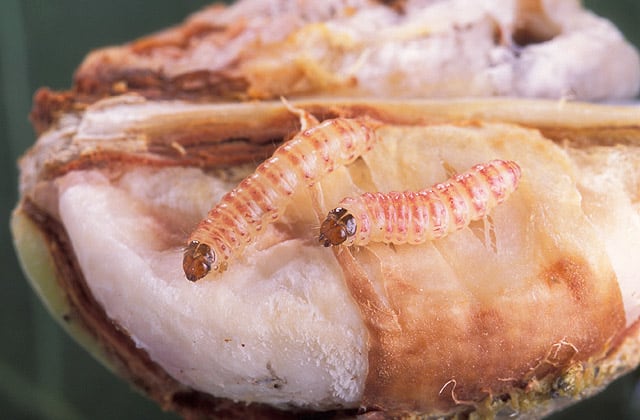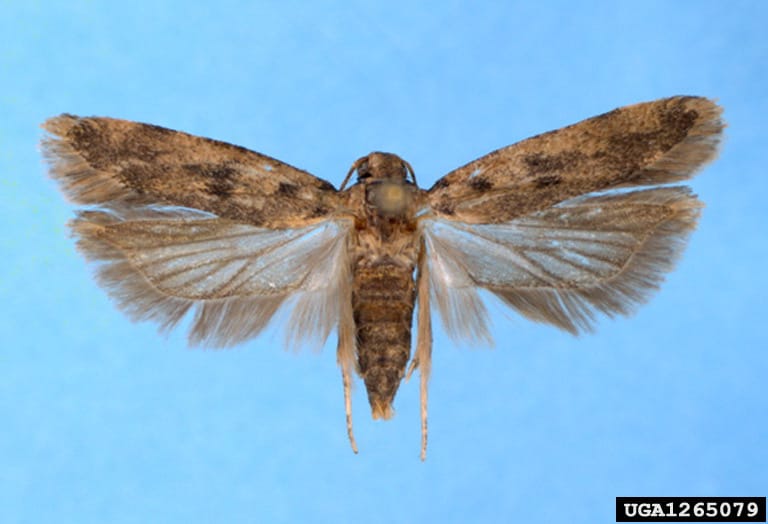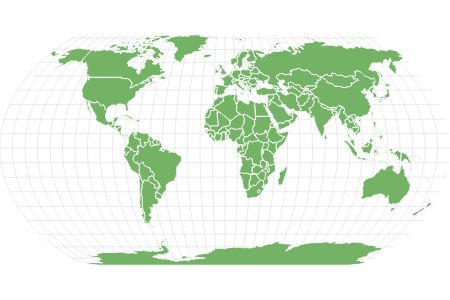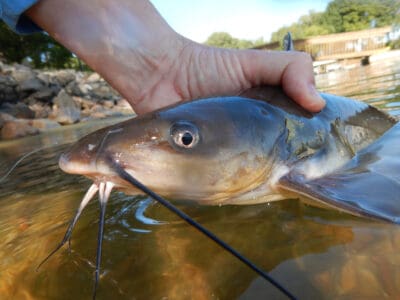To combat their spread billions of sterilized moths were released in affected areas by being dropped from airplanes!
Advertisement
Pink Bollworm Scientific Classification
- Kingdom
- Animalia
- Phylum
- Arthropoda
- Class
- Insecta
- Order
- Lepidoptera
- Family
- Gelechiidae
- Genus
- Pectinophora
- Scientific Name
- Pectinophora gossypiella
Read our Complete Guide to Classification of Animals.
Pink Bollworm Conservation Status
Pink Bollworm Facts
- Prey
- N/A
- Main Prey
- N/A
- Name Of Young
- larvae
- Group Behavior
- Solitary
- Fun Fact
- To combat their spread billions of sterilized moths were released in affected areas by being dropped from airplanes!
- Estimated Population Size
- Undetermined
- Biggest Threat
- Transgenic cotton, pesticide
- Most Distinctive Feature
- pink bands on back of larval body
- Distinctive Feature
- brown head
- Other Name(s)
- N/A
- Gestation Period
- 3 days
- Temperament
- docile
- Wingspan
- 0.35 - 0.60 inches (10-15 mm)
- Training
- N/A
- Optimum pH Level
- N/A
- Incubation Period
- 3 days
- Age Of Independence
- 3-4 weeks
- Age Of Fledgling
- 3-4 weeks (emergence)
- Average Spawn Size
- 200
- Litter Size
- N/A
- Habitat
- Cotton fields
- Predators
- wasps, spiders, birds
- Diet
- Herbivore
- Average Litter Size
- N/A
- Lifestyle
- Nocturnal
- Favorite Food
- cotton
- Type
- Pectinophora gossypiella
- Common Name
- Pink bollworm
- Special Features
- pink bands on back
- Origin
- Asia
- Number Of Species
- 4
- Location
- Asia, Europe, Africa, Australia, North America, South America
- Average Clutch Size
- 200
- Slogan
- N/A
- Group
- eclipse
- Nesting Location
- cotton bolls
- Age of Molting
- varies times through larval stage
Pink Bollworm Physical Characteristics
- Color
- Brown
- Grey
- White
- Orange
- Pink
- White-Brown
- Multi-colored
- Skin Type
- Exoskeleton
- Lifespan
- 3 weeks - 1 year
- Weight
- less than one ounce
- Height
- 0.25 inches
- Length
- 0.25 - 0.30 inches (7-8 mm)
- Age of Sexual Maturity
- 1-3 days post emergence
- Age of Weaning
- N/A
- Venomous
- No
- Aggression
- Low
View all of the Pink Bollworm images!
The pink bollworm (Pectinophora gossypiella) is a small moth. This only goes to prove that size isn’t everything, because this little moth, or more precisely its even smaller larvae, are destructive pests that feed on cotton bolls, causing significant damage to cotton crops worldwide. Originally native to Asia, this moth species has spread to many cotton-growing regions of the world, including the Americas, Europe, Africa, and Australia. Despite the numerous efforts to control its population, the pink bollworm remains a major threat to cotton production and a significant challenge to farmers. In this article, Let’s explore the appearance and behavior of the pink bollworm, its economic impact on cotton production, and the various methods used to control its population. Keep reading to learn more about this petulant pest.
Five Facts about Pink Bollworms
- The pink bollworm is a major pest of cotton crops, feeding on the cotton bolls and causing damage that can result in significant economic losses for growers.
- Pink bollworms are found in many cotton-growing regions around the world, including North America, South America, Africa, the Middle East, and Asia.
- The pink bollworm has a complex life cycle, including a pupal stage that can last for up to 9 months!
- The use of insecticides has been a common method of controlling pink bollworm populations, but in recent years, genetically modified cotton that targets pink bollworms has become more widely adopted.
- To combat their spread, researchers developed a technique called sterile insect release, in which billions of sterilized moths are released into the environment by being dropped from airplanes!
Scientific Name
The scientific name Pectinophora gossypiella is Latin. Pectinophora is a combination of two words: pectino which means pectin, and phora which means carrier or bearer. So, the word Pectinophora roughly translates to pectin carrier or bearer of pectin. Gossypiella is a combination of the Latin word gossypium, meaning cotton, and the diminutive suffix –ella, meaning small. So, the scientific name of the pink bollworm can be translated as the small carrier of pectin and cotton! While the pink bollworm in its larval stage feeds on cotton bolls, other species in the genus forage in orchards.
Pink Bollworm: Appearance
Depending upon the stage of development, this insect’s appearance can be quite different. The adult pink bollworm is a small, grayish-brown moth with a wingspan of about 0.35 – 0.60 inches (10-15 mm). It has comb-like scales on its wings, which help to distinguish it from other moth species. The hind wings are fringed, and the body is slender. The newly hatched larvae are white with brown heads. As they mature, the larvae develop pink bands on their backs. They are between 0.25 – 0.30 inches (7-8 mm) in length. They have pointed brown heads and eight pairs of legs on their abdomens which they use to move and cling to cotton fibers. The pupa is enclosed in a cocoon made of cotton fibers and is about 0.25 inches (7 mm) long.

As they mature, pink bollworm larvae develop pink bands on their backs.
©Peggy Greb – USDA, ARS, Public domain – License
Pink Bollworm: Behavior
The larvae of this insect cause significant damage to cotton plants. Pink bollworm larvae feed on the developing seeds and fibers within the cotton bolls, reducing the yield and quality.
The larvae grow up to 0.25 – 0.30 inches (6-8 mm) in length and have a pink or light green color, with a brown head capsule. They have five pairs of fleshy legs (prolegs) on the abdomen, and one pair on the posterior end, which they use to move and cling to cotton fibers.
The pink bollworm larvae are quite active and move rapidly within the cotton bolls, which can make them difficult to detect and control. They feed on the cotton bolls, leaving behind webbing and frass (excrement), which can reduce the quality and value of the cotton fibers. In addition, the feeding damage can make the plants more susceptible to secondary infections by fungi and bacteria.
The larvae are destructive and can have significant economic consequences for cotton growers. Effective management strategies, including insecticides, cultural practices, and biological control, are essential for minimizing their impact on cotton production
Pink Bollworm: Habitat
Pectinophora gossypiella is found in regions where cotton is grown, including the Americas, Europe, Africa, and Asia. It is believed to have originated in India and spread to other parts of the world through the cotton trade. These hardy insects can survive and reproduce in a wide range of environmental conditions but prefer warm and dry climates. It can complete its entire life cycle within the cotton boll, which provides a protected environment and a source of food for the larvae. Apart from cotton, the pink bollworm may also infest other host plants, including okra (Abelmoschus esculentus) and hibiscus (Hibiscus syriacus). However, cotton is the primary host for this insect, and most of the control measures are targeted at reducing its population in cotton crops.
Efforts to control the spread of Pectinophora gossypiella have been successful in some areas, but the insect remains a significant challenge to cotton growers worldwide. Integrated pest management strategies that combine chemical and non-chemical control measures are typically used to manage this pest and minimize its impact on cotton production.
Diet
The larvae of the pink bollworm feed on the seeds and lint of cotton bolls. They enter the bolls through small openings. They then consume the developing seeds and lint, causing damage to the cotton fiber. The larvae are considered a serious pest, as they can significantly reduce the yield and quality of the crop. Control of the larvae involves the use of insecticides and crop rotation. Planting genetically modified cotton varieties that resist the advances of Pectinophora gossypiella is another strategy.
Adult moths do not feed on plant material or nectar. Their only objectives are to mate and lay eggs on the host plant, which in this case is cotton. The adults have non-functional mouthparts, which means they are not equipped to consume any food. Adult moths typically live from 3-10 days. They spend most of their time seeking out a mate and a suitable nesting site in which to deposit their eggs. They are active at night and are attracted to pheromone traps and light sources.
While the adult moths do not directly feed on cotton or any other plant, they are still considered significant pests. This is because they lay their eggs on cotton bolls. The resulting larvae damage the developing seeds and fibers inside the bolls. By reducing the populations of adult pink bollworm moths, growers can minimize the damage to cotton crops.
Pink Bollworm: Predators and Threats
Predators
Several predators feed on Pectinophora gossypiella and contribute to the natural control of their populations. Some of their common predators are:
- Parasitic wasps: Parasitic wasps parasitize pink bollworm larvae. The wasps lay their eggs on or inside the larvae, which then hatch and feed on the larvae, eventually killing them. Some of the common parasitic wasps that attack pink bollworms include wasps from the genera Braconid, Chalcid, and Trichogramma.
- Predatory insects: Predatory insects feed on pink bollworm eggs and larvae, including lacewings (Neuroptera), ladybugs, and minute pirate bugs (Orius). These insects can be effective in reducing the populations of pink bollworms in the field.
- Birds: Mockingbirds, house sparrows, and blackbirds feed on pink bollworm larvae that are exposed or accessible. Their effectiveness in controlling the pest is generally limited due to the mobility of the larvae within the cotton bolls.
- Spiders: Some spider species feed on pink bollworm larvae and pupae. Wolf spiders and brown recluse spiders are among them..
Threats
Pectinophora gossypiella faces several threats that can affect its populations and ability to damage cotton crops. Some of the common threats are:
- Pesticide: Pesticide is a principal threat to pink bollworms, as pesticides are often employed as a means of control. However, excessive or indiscriminate use of pesticides can lead to the development of resistance in pink bollworms. This makes it difficult to manage them effectively.
- Natural enemies: Parasitic wasps and predatory insects, can help control pink bollworm populations. Their effectiveness can be limited by factors such as habitat destruction and pesticide use.
- Changes in climate: Increased temperatures and altered precipitation patterns, negatively affect the life cycle and behavior of pink bollworms. Warmer temperatures can speed up the development of pink bollworms and reduce the effectiveness of some management strategies.
- Changes in agricultural practices: The adoption of genetically modified cotton varieties that produce chemicals that are toxic to pink bollworms.
- Quarantine measures: To prevent the spread of pink bollworms to new regions Quarantine measures are employed. These measures can include restrictions on the movement of cotton and other materials that can harbor the pest. Pheromone traps monitor the effectiveness of such measures.
Conservation Status and Population
Pectinophora gossypiella is not listed on the IUCN Red List of Threatened Species. Pink bollworms are not considered for listing on the IUCN Red List. This is because they are considered agricultural pests that can cause significant economic damage to cotton crops. Their impact on agricultural production can be significant. Consequently, efforts are made to manage their populations.
The population of pink bollworms varies depending on factors like the availability of host plants, climate, and management practices. In areas where cotton is a significant crop, the population of pink bollworms can be substantial. Pink bollworm populations are monitored using pheromone traps,. These traps capture and count the number of male moths in a particular area. By tracking the population of male moths, researchers can estimate the size of the population and monitor changes in it over time.
In some areas, pink bollworm populations have been successfully controlled through the use of various management strategies, including the use of genetically modified cotton that produces chemicals that are toxic to pink bollworms. The use of insecticides and the use of cultural practices, such as crop rotation, are also implemented. However, in areas where effective management practices are not in place, pink bollworms continue to wreak havoc, causing significant damage to cotton crops.
Pink Bollworm: Lifecycle
The lifecycle of the pink bollworm (Pectinophora gossypiella) consists of four stages: egg, larva, pupa, and adult. The adult female moth lays eggs on or near cotton bolls. The eggs are usually laid in small groups. After the eggs hatch, the pink bollworm larvae emerge and begin feeding on the cotton fibers and seeds. The larvae pass through several stages or instars, during which they grow in size and continue to feed. Once the larvae are fully grown (12-15 days) they spin cocoons and transform into pupae. During the pupal stage, the pink bollworm undergoes metamorphosis and transforms into an adult moth.

During the pupal stage, the pink bollworm undergoes metamorphosis and transforms into an adult moth.
©Mississippi State University Archive, Mississippi State University, Bugwood.org, CC BY 3.0 US – License
The adult moth emerges from the cocoon 7-10 days later. Pectinophora gossypiella is small, with a wingspan of approximately 0.35 – 0.60 inches (10-15 mm). The adult moths have vestigial (undeveloped) mouthparts and do not feed. Their sole purpose is to mate and lay eggs, starting the life cycle again. Adults do not live long, usually dying within 3 to 10 days. In general, the entire life cycle of the pink bollworm can be completed in 30-45 days under optimal conditions.
The final seasonal generation of Pectinophora gossypiella overwinters as pupae in diapause, which is a state of arrested development that allows them to survive through adverse environmental conditions. In this stage, the pink bollworm larvae have undergone their final molt, and they form a pupal case around themselves, in which they remain dormant throughout the winter. In the spring, with the onset of favorable environmental conditions, the pupae emerge as adult moths, ready to mate and lay eggs on cotton plants.
Pink Bollworms and King Cotton
The near-eradication of pink bollworms from the Continental United States and Northern Mexico was a massive and coordinated effort that involved releasing billions of sterile pink bollworms from airplanes! Researchers developed a technique called sterile insect release, in which billions of sterilized moths are released into the environment. They mate with native moths, producing infertile offspring, thereby reducing the population. This method was employed in the eradication program and was largely successful in wiping out the pink bollworm population from the affected regions.
While the sterile insect release program was successful in eradicating the pink bollworms from most of the cotton-growing regions in the continental United States and Northern Mexico, there have been sporadic detections of pink bollworms in recent years. However, these have been effectively managed through intensive surveillance and control measures. The eradication efforts have been ongoing, and a combination of techniques, including the use of genetically modified cotton and pheromone-based traps, are currently being employed to prevent a resurgence. Between 2014-2019 the sterile insect release initiative increased U.S. farmers’ yields by nearly $200 million dollars (US) while simultaneously reducing the need for pesticides and their associated environmental impact.
Genetically Modified Cotton
In the late 1990s, Monsanto (now Bayer) began developing a variety of genetically modified or transgenic cotton called Bt cotton. Bt cotton was designed to produce a naturally occurring chemical derived from the bacterium Bacillus thuringiensis (Bt). Bt cotton is toxic to some insects, including the pink bollworm. The toxin is considered to be safe for humans and non-target organisms. Bt cotton has been widely adopted by cotton growers in many parts of the world, including India, China, the United States, and Mexico, as a means of controlling pink bollworm infestations and reducing the need for insecticide applications. In some areas, the adoption of Bt cotton has led to significant reductions in pink bollworm populations, resulting in higher crop yields.
However, there are concerns about the long-term sustainability of Bt cotton, including the possibility of resistance development by the target pests (pink bollworms) and the potential for non-target effects. These issues are the subject of ongoing research and discussion.
Pink Bollworm FAQs (Frequently Asked Questions)
What does the pink bollworm look like?
Depending upon the stage of develop this insect is in, its appearance can be quite different. The adult pink bollworm is a small, grayish-brown moth with a wingspan of about 0.35 – 0.60 inches (10-15 mm). It has comb-like scales on its wings, which help to distinguish it from other moth species. The hind wings are fringed, and the body is slender. The newly hatched larvae are white with brown heads. As they mature, the larvae develop pink bands on their backs. They are between 0.25 – 0.30 inches (7-8 mm) in length. They have pointed brown heads and eight pairs of legs on their abdomens which they use to move and cling to cotton fibers. The pupa is enclosed in a cocoon made of cotton fibers and is about 0.25 inches (7 mm) long.
What do pink bollworms eat?
The larvae of the pink bollworm feed on the seeds and lint of cotton bolls. They enter the bolls through small openings and then consume the developing seeds and lint, causing damage to the cotton fiber. They will also feed on okra and hibiscus. Adult pink bollworm moths do not eat. Their role is to mate and lay eggs. Then they die.
Where do pink bookworms live?
Pectinophora gossypiella is found in regions where cotton is grown, including the Americas, Europe, Africa, and Asia. It is believed to have originated in India and spread to other parts of the world through the cotton trade. These hardy insects can survive and reproduce in a wide range of environmental conditions but prefer warm and dry climates. It can complete its entire life cycle within the cotton boll, which provides a protected environment and a source of food for the larvae. Apart from cotton, the pink bollworm may also infest other host plants, including okra (Abelmoschus esculentus) and hibiscus (Hibiscus syriacus)
What is sterile insect release?
To combat the spread of pink bollworms, researchers developed a technique called sterile insect release, in which billions of sterilized moths are released into the environment. To release the sterile bollworms over large areas, they drop them out of airplanes! The sterile moths mate with native moths, producing infertile offspring, thereby reducing the population. This method was largely successful in wiping out the pink bollworm population from the affected regions.
What is genetically modified cotton and what does it have to do with pink bollworms?
Genetically modified or transgenic cotton, called Bt cotton, was designed to produce a naturally occurring chemical derived from the bacterium Bacillus thuringiensis (Bt) that is toxic to certain insects, including the pink bollworm. The toxin is considered to be safe for humans and non-target organisms. Bt cotton has been widely adopted by cotton growers in many parts of the world, including India, China, the United States, and Mexico, as a means of controlling pink bollworm infestations and reducing the need for insecticide applications. In some areas, the adoption of Bt cotton has led to significant reductions in pink bollworm populations, resulting in higher crop yields.
Thank you for reading! Have some feedback for us? Contact the AZ Animals editorial team.
Sources
- worst.edu, Available here: http://npic.orst.edu/ingred/ptype/pheromone.html
- mdac.ms.org, Available here: https://www.mdac.ms.gov/bureaus-departments/plant-industry/plant-pest-programs/pink-bollworm/
- pnas.org, Available here: https://www.pnas.org/doi/10.1073/pnas.2019115118
- wikipedia.org, Available here: https://en.wikipedia.org/wiki/Pink_bollworm
- iaea.org, Available here: https://www.iaea.org/topics/sterile-insect-technique
- arizona.edu, Available here: https://cals.arizona.edu/crop/cotton/insects/pbw/NCCPBWnewsNo2.pdf
- arizona.edu, Available here: https://cals.arizona.edu/pubs/general/resrpt1996/t_cotton.html

















